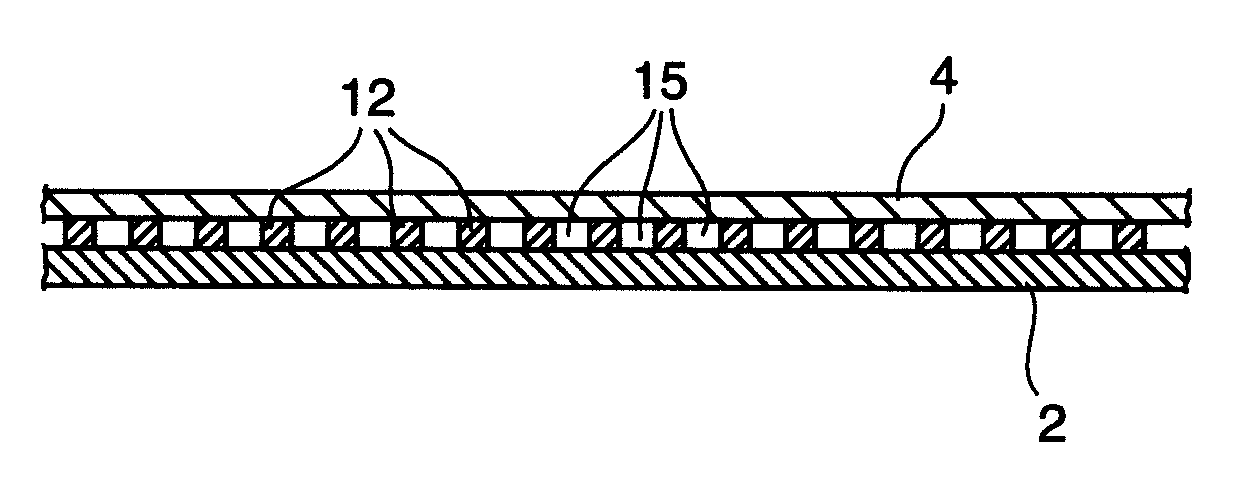Method of adhering a material to another material and product produced by the method
a technology of adhesives and materials, applied in the field of adhesives, can solve the problems of poor adhesive interface, poor quality of composite products, and low durability of composite products
- Summary
- Abstract
- Description
- Claims
- Application Information
AI Technical Summary
Benefits of technology
Problems solved by technology
Method used
Image
Examples
Embodiment Construction
[0021]FIGS. 1 and 2 illustrate an application of the method of the invention for bonding a first material 2 to a second material (or casting resin system) 4 using an anchoring adhesive 11 and a bonding adhesive 15. The material 4 may be any other material, or the same as the material 2, and both materials 2, 4 may be rigid or flexible or any combination thereof. The anchoring adhesive 11 may be rigid or flexible when cured, and is preferably selected for its ability to bond to the material 2 or 4.
[0022]In the illustrated embodiment the adhesion zone 10 covers an upper-left hand portion the surface of the material 2. It will be appreciated that the adhesion zone 10 may cover all or any desired portion of the material 2 and / or the material 4. The material 2 and / or 4 to which the anchoring adhesive is applied is sometimes referred to herein as the substrate, however it will be appreciated that either the first material 2 or the second material 4, or both, may be a substrate. In practic...
PUM
| Property | Measurement | Unit |
|---|---|---|
| adhesion | aaaaa | aaaaa |
| degree of adhesion | aaaaa | aaaaa |
| adhesive | aaaaa | aaaaa |
Abstract
Description
Claims
Application Information
 Login to View More
Login to View More - R&D
- Intellectual Property
- Life Sciences
- Materials
- Tech Scout
- Unparalleled Data Quality
- Higher Quality Content
- 60% Fewer Hallucinations
Browse by: Latest US Patents, China's latest patents, Technical Efficacy Thesaurus, Application Domain, Technology Topic, Popular Technical Reports.
© 2025 PatSnap. All rights reserved.Legal|Privacy policy|Modern Slavery Act Transparency Statement|Sitemap|About US| Contact US: help@patsnap.com


